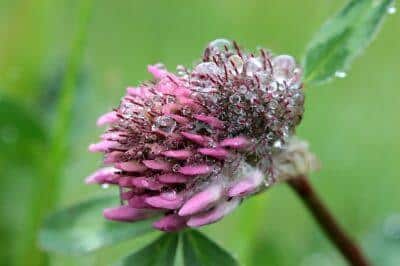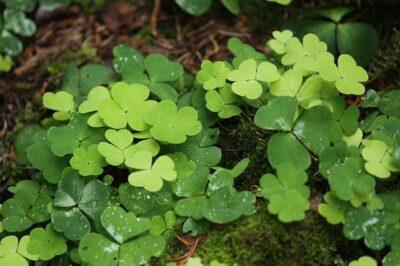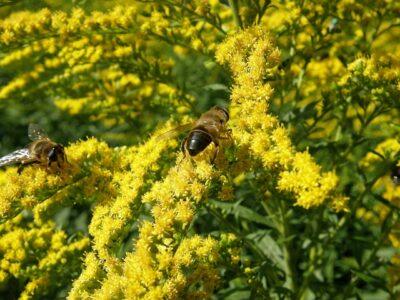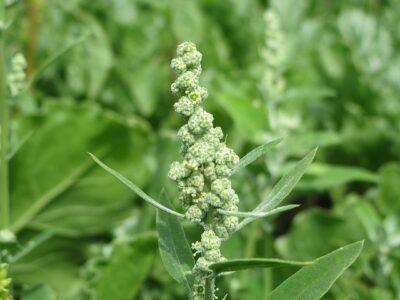Don’t get me wrong. There are plenty of wild plants you shouldn’t eat, and some are downright poisonous. But surprisingly, there are quite a few weeds and wild flowers that are not only delicious but also nutritious — and growing in your backyard or surrounding fields.
What’s critical is knowing what they look like and what parts to eat. A good example is dandelion. The leaves, flower and roots are edible. The flower stalk is not.
Many of these wild plants have significant nutritional value on par with spinach and kale. They also present a variety of flavor profiles, from salty to sweet to citrus accents. Most are best combined with other ingredients, but some taste great on their own as a side dish or salad.
A common caution, in addition to accurate identification, is to avoid areas that may have been exposed to herbicides or other chemicals when harvesting. This often happens in many yards, roadsides, public parks and other places that appear to be “too manicured.” You may have to find a field or wild place to find some, but just as many are in your yard if you haven’t been too aggressive about “killing the weeds.”
Discover The Secrets Of The Word’s Top Survivalists!
On that note, “weeds” is a prejudicial word. These are actually indigenous, wild plants – plants your great-grandparents and other ancestors ate. Those are plants that thrive in a certain part of the country and climate. Some have been imported over the years from various parts of the world, either intentionally or by accident, and others have been here a lot longer.
If I’m harvesting more than one kind of wild plant, I’ll often use one-gallon plastic bags so I can easily keep them separated. A mixed bag of wild plants may be a bit difficult to prepare or cook and eat because of the variety of types and uses.
You also should aggressively wash the plants in cold water with numerous rinses to clean off any dust, dirt, bugs or other stuff that have found their way onto the plant. A rinse in vinegar is not a bad idea to kill any bacteria, given that vinegar is a powerful and natural antiseptic.
Here’s the list, although it’s by no means all-inclusive. Various parts of North America present a broad variety of edible wild plants, but hopefully you’ll be able to find a few of these:
1. Red clover. If you can’t find red clover in your yard or woods, you’re either living in the desert or high mountains. Red clover is just about everywhere, and the flowers are the primary food source — as a garnish for anything or in a soup or just a fresh snack. It has a mild flavor that is sometimes semi-sweet.
2. Wild garlic. This plant looks like a green onion and has light, purple flowers. If you crush the leaves, you’ll smell a distinctive garlic smell. That’s important because while the bulb will have a garlic smell, many other plants in the daffodil family have a garlic flavor-note in their bulbs — and they’re toxic. If the crushed green leaves don’t smell like garlic, ignore any garlic smell from the bulb. You can chop the leaves into a soup or salad or as part of a marinade or sauce, and you can also use the bulbs as garlic in any recipe.
3. Wood sorrel. The leaves, flower and tender stem when the flowers are first emerging can be used in mixed salads, flavorful pies like strawberry and rhubarb pies, and have been identified as a salt substitute by some sources.
4. Sweet goldenrod. No. It doesn’t make you
sneeze. That’s a myth unless you’re hypersensitive to pollen from any plant. The flowers and young buds have a semi-sweet, licorice-like flavor. It makes a great tea and is often added to breads, pancake batter and muffins.
5. Wild ginger. This is all about the roots. The rest of the plant shouldn’t be eaten, because it’s flavorless and a bit toxic. The roots can be harvested year-round. Be careful. A variety of wild ginger known as Asarum Caudatum has toxic properties. Asarum Canadanese is the safe variety. It’s used any way you would use ginger, from grated to sliced and pickled, to candied in sugar, to dehydrated.
6. Lamb’s quarters. It’s commonly known as pigweed, and I have a ton of it in my backyard. It spreads like mint and the leaves are like spinach when boiled in water for three minutes and shocked in ice water. It’s a great three-season plant, from spring to fall. In the fall, the seeds are usually harvested and used in breads or as a garnish.
7. Wild grape leaves. This is my personal favorite, and I saved it for last. We have wild grape vines growing everywhere, and it’s not about the wild grapes but the leaves. There’s a classic Greek recipe called “Dolmades,” or in some cultures “Dolmas.” It involves rolling a mix of meat and rice with herbs and spices in grape leaves about the size of a stubby cigar. Here’s the full recipe in case you come across these wonderful and natural wraps:
Dolmades
Ingredients
40 to 50 large wild grape leaves
4 cups of vinegar
4 cups of water
½ cup of salt
Directions
Soak wild grape leaves in mixture of vinegar, water and salt overnight. Drain and rinse.
Filling ingredients
1 pound of ground meat. Could be beef, pork, game, squirrrel or possum
2 cups of rice. Could be white, brown or wild rice
2 tablespoons of chopped mint
1 tablespoon of salt
1 teaspoon of pepper
Directions
Brown the meat and cook the rice. Combine both with the spices. Let the mixture cool. Take the wild grape leaves and place a finger-sized piece of the mixture on a grape leaf and roll it up in the shape of a small, stubby cigar. Place the roll into a baking dish and continue until the dish is full. Add a half cup of broth (beef or chicken) to the baking dish and bake at 325 for 30 minutes. Remove to a platter and serve. You can top with a sauce if you like, including the classic Greek Avgelemono, but they also taste great a’natureal.
There are other plants, trees and flowers you can eat, but remember: If you’re not sure, just skip it. Many plants are poisonous, and just as many look the same. Hopefully you’ll find some of these good guys and enjoy them on your table someday. The best news is … they’re free!
What advice would you add on harvesting these seven weeds? Would you add anything to this list? Share your advice in the section below:
Harness The Power Of Nature’s Most Remarkable Healer: Vinegar
 Off The Grid News Better Ideas For Off The Grid Living
Off The Grid News Better Ideas For Off The Grid Living








